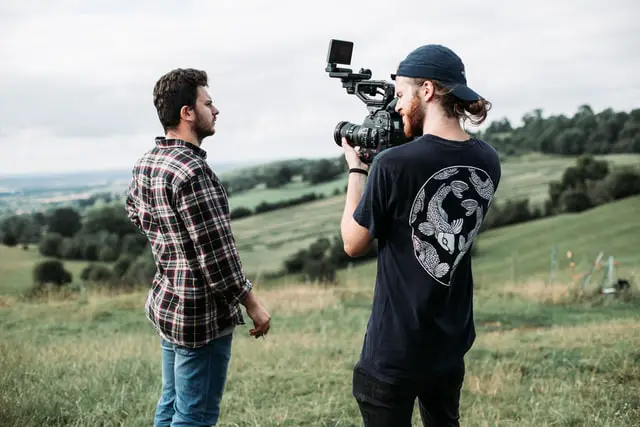Documentaries can be a powerful tool for filmmakers to share stories that might not otherwise be heard. They are a unique genre of film that tell factual stories about real-life events, people, and places. The stories and emotions they capture can become incredibly powerful pieces of art.
But who is the target audience for documentaries?
If you’re a filmmaker or a producer considering making a documentary, you will need to know who your target audience will be so that you can create content that is engaging and relevant to them.
This knowledge will also help you market your documentary so that it reaches the most relevant audience.
In this article, we will discuss who the target audience for documentaries is and how you can reach them!
Shall we dive in?
What is a Documentary? What is its Aim?
A Documentary is a non-fiction film or television program that documents real people, events, and places.
Documentaries often use a storytelling format to share the real-life experiences of their subjects. They can be educational, informative, or simply entertaining!
The aim of a documentary is usually to raise awareness about a certain issue or to change the way people think about something.
Some documentaries entertain. Others educate. Some others are made to persuade the audience. While some aim simply to focus on an issue that the filmmakers care about.
However, all documentaries have one common goal: to tell a story that is true and real.
Who is the Target Audience for Documentaries?
The target audience for documentaries varies depending on the topic of the documentary and the intended purpose of the film.
For example, a documentary about the life of a famous musician might be targeted at music fans, while a documentary about environmental issues might be targeted at people who care about the environment and global warming.
Documentaries can also be targeted toward specific demographics, such as children or adults. For example, a documentary about child labor might be targeted at adults, while a documentary about teenage drug use might be targeted at teenagers (or parents of teenagers).
Many documentaries will capture a moral or cultural challenge or dilemma faced by society. For instance, the documentary Fahrenheit 911 wanted to change the way people thought about the war in Iraq. Or the documentary Bowling for Columbine aimed to raise awareness about gun violence in America.
How do Documentaries Affect or Influence an Audience?
A primary goal of any documentary is to tell a story and have an impact. So what are the ways in which documentaries can affect or influence an audience?
Powerful documentaries can change the way people think about a topic, open their eyes to new perspectives, or even inspire them to take action.
Documentaries can also educate viewers about important issues and help raise awareness about social justice issues. For example, the documentary “An Inconvenient Truth” helped educate people about the dangers of climate change.
In addition to changing the way people think, documentaries can also change the way people feel. They can be emotional and moving experiences that touch viewers on a personal level.
For example, the documentary “Dear Zachary: A Letter to a Son About His Father” tells the story of a man who was killed by his ex-girlfriend. The film is emotionally devastating, but it also raises important awareness about domestic violence.
So, now that we’ve answered the questions “Who is the target audience for documentaries?” and “How your documentary could affect your audience?”, let’s discuss how you can reach and market to your audience!
How can you Market a Documentary?
The first step in marketing your documentary is to clearly define your target audience. Ask yourself these questions:
- Who will be most interested in watching my documentary?
- Who do I want to watch my documentary?
- Who will be most affected by my documentary?
- How can I reach my target audience?
Once you are clear on such questions, here are some marketing strategies you can pursue to reach your audience and convince them to watch your documentary:
- Create a website for your documentary and use SEO techniques to ensure that people who are interested in your topic can find your film.
- Create a YouTube channel and post engaging trailers, clips, and behind-the-scenes footage.
- Use social media to create a buzz about your film. Share interesting facts, stories, and quotes from your documentary on Twitter, Facebook, and Instagram. Share videos from your YouTube channel on these other social platforms as well.
- Enter your documentary into film festivals related to its subject matter.
- Partner with organizations that align with the message of your documentary. For example, if you have a documentary about animal rights, partner with an animal rescue organization.
- Host screenings of your documentary in community centers, universities, and other venues.
- Get involved with organizations that are related to your documentary’s topic and promote your film to their members/followers.
- Release your film online so that people can watch it on their own time. Platforms like Vimeo and iTunes make it easy to do this.
Marketing a documentary can be a lot of work, but it’s worth it when you find an audience that is moved by your film. Keep in mind that the best way to market your documentary is to create a well-made film that tells an important story.
Conclusion
The target audience for documentaries can vary depending on the documentary and its topic. Nevertheless, it is important to define a target audience when making and marketing a documentary.
The best way to determine this is to think about the purpose of your documentary and who you want to reach with your story.
Keep in mind that the best way to market your documentary is to create a well-made film that tells an important story. With this approach, you are more likely to reach and influence your target audience.

